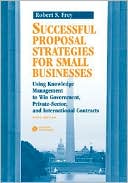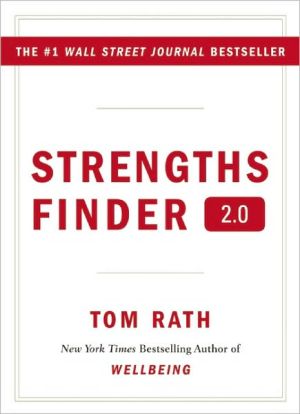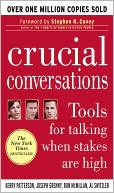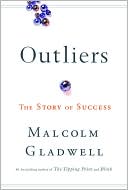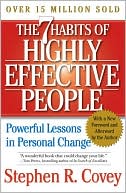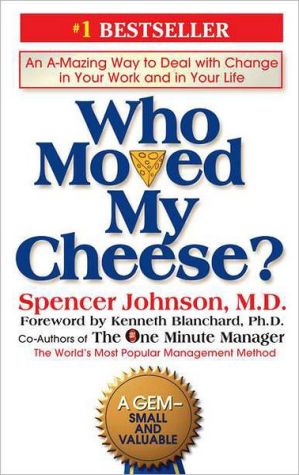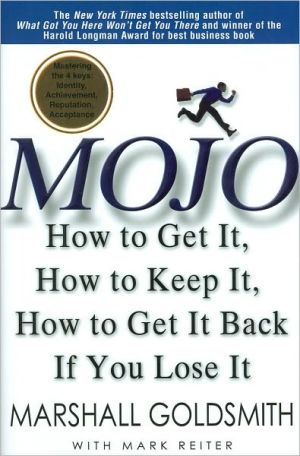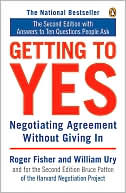Successful Proposal Strategies for Small Businesses: Using Knowledge Management to Win Government, Private-Sector, and International Contracts
Search in google:
Winning new business presents significant challenges. The new, fifth edition of this perennial bestseller updates and expands upon previous editions. The result is the ultimate resource for small and mid-sized businesses, as well as non-profit organizations and public-sector agencies, looking to achieve effective, efficient, and disciplined business development, capture management, proposal development, and knowledge management (KM) processes that in turn support winning new business. This popular book and its companion CD-ROM are highly accessible, self-contained desktop references developed to be informative, highly practical, and easy to use. Among the extensive array of new material, the fifth edition covers how to establish an internal rapid-response task order proposal "engine" for GWACs and ID/IQs, prepare for successful graduation from the U.S. Small Business Administration 8(a) Program, and succeed in the world of very small businesses. Widely reviewed in the trade and business press, here is what top journals, magazines, and Web sites have to say about earlier editions...About the Author:Robert S. Erey, M.B.A., M.S.M., M.A., is a principal in the Northern Virginia-based, woman-owned consultancy of Successful Proposal Strategies, LLC. Previously
Acknowledgments xvIntroduction xviiCompetitive proposals and small business 1Overview 3From set-asides to full-and-open competition 7Small business constraints 13Maximizing small business strengths 13SBIR and STTR programs 15Organizing your company to acquire new business 18Effective strategic and mission planning 24Converting knowledge into proposal success 26KM benefits proposal development 32Internal and external clients: looking at clients in a whole new way 39Endnotes 39Strategic partnering and subcontracting opportunities 45Subcontracting opportunities and pathways to success 46Critical success factors 47Specific strategies for achieving subcontracts 48Becoming part of a governmentwide acquisition contract (GWAC) team 52How mentor-protege programs can help your business 55Endnotes 60Marketing to and with your clients 61More than just selling 61Transactions are personal-people buy from people 67Listen to yourclient 68Infuse marketing intelligence into your proposal 69Intelligence gathering and analysis techniques 70Call plans 75Maintain management visibility on your contracts 79Project managers as client managers 83Commercial off-the-shelf acquisition 84Pursuing firm-fixed-price and invitation-for-bid opportunities 88Using the request for information and the request for comment as valuable marketing tools 88Contractor prequalification statements 89Ethics in marketing and business development 90Advertising, trade shows, and high-impact public relations 92Endnotes 97Requests for proposals 101Overview 101Part I-the schedule 104Part II-contract clauses 104Part III-list of documents, exhibits, and other attachments 105Part IV-representations and certifications 105The importance of Section L (instructions to offerors) 105Section M (evaluation criteria): toward maximizing your score 108Greatest or best-value approach 108Emphasis on performance-based acquisition (PBA) 109Influencing the content of an RFP-legitimately 113Other types of solicitation documents 114Endnotes 115Private-sector solicitation requests 117Grant proposals-winning what you bid 120Letters of inquiry 121Balancing the technical and the nontechnical 122Standard grant proposal components 122Nongovernmental organizations (NGOs) 123The federal acquisition process: emerging directions 127Major trends going forward 127Rapid order task response 130Federal procurement process overview 133Statutory and regulatory requirements for competition 133The source selection process 135Full-and-open competition 137Major contract types 138Significant recent paradigm shifts in federal government acquisition 139Understanding the Federal Acquisition Streamlining Act (FASA) 146Endnotes 153The proposal life cycle 157What is a proposal in the competitive federal and commercial marketplace? 157Where does the proposal fit into the total marketing life cycle? 160Bid-no bid decision-making process 176Planning and organizing 178Draft executive summary 178Theme development 179Storyboards 184Kickoff meeting 185Writing 186Major contractor review cycles 190Blue or Pink Team 195Red Team 195Gold Team 199Black Team 199Black hat review 199Preparing for orals and Final Proposal Revision (FPR) 200Debriefings (refer to FAR 15.1003) 201Endnotes 202Major proposal components 203Overview 203Transmittal letter 204Technical volume 205Front cover 205Nondisclosure statement on the title page 207Executive summary 208Building a compliance (cross-reference) matrix 210Narrative body of the technical volume 212Management volume 215Cost volume 225Price to win 227Government contract requirements 228Endnotes 229Acquisition/capture and proposal team activities 231Formation and function of acquisition/capture teams 231Prekickoff activities 233Proposal kickoff meeting 235Postkickoff activities 241The role of the proposal manager 243Overview 243Generalized job description 245Changing focus of proposal management 255Effective solution development 257Complementary roles and responsibilities of proposal and capture managers 260The growing importance of oral presentations 261Outsourcing oral presentation support 262Oral presentation development process 262Specific oral presentation guidelines for success 265Attending to the details 266Control of the schedule 267Training additional staff in proposal-management skills 270Finish the job at hand 270Successful proposal managers 271Endnotes 272Pursuing international business and structuring international proposals 273Overview 273Where in the world to begin? 275The importance of the World Bank Group 276Your company's participation in United Nations procurements 280European Bank for Reconstruction and Development (EBRD) 281Asian Development Bank (ADB) 282International market planning 283In-country partnerships 285Host country procurement environments 286Import-export considerations and technology transfer 286Risk assessment 287Terms and conditions 287Ex-Im Bank of the United States assists small businesses 289Helpful Web-based resources and in-country support infrastructures for small businesses 290British-American Business Council 302U.S. Trade and Development Agency 303U.S. Agency for International Development 303Endnotes 306Proposal production and publication 309Internal documentation standards 311Document configuration management and version control 312Freelance and temporary publication staff 314Incorporating technical brilliance up to the last minute 314Graphics are an integral part of your proposal 315Action captions 317Configuration control of graphics 319Role and structure of your publications group 319Software and hardware compatibility, standards, and recommendations 320Electronic proposal submittal and evaluation 322Important documentation tips 324Virtual proposal centers, intranets, and extranets 326Useful document management systems (DMS) 327Using freelance proposal writers to maintain technical productivity 330Endnotes 333Human and organizational dynamics of the proposal process 335Modifying our thinking to win 336Building a competitive work ethic 337Strong link between project performance and proposal success 338Past performance-it's more important than you think! 339Proposals can be fun! 345Maximizing human intellect 346Proposal professionals as change agents 348Wellness in your proposal process 348Endnotes 349Controlling bid and proposal costs 351What does it cost to get new business, and how are those costs recovered? 352Tracking B&P expenditures 353Business development bonus policy 353Stretching limited marketing funds 356Endnote 357Tried-and-true proposal writing and editing techniques 359Proposals are knowledge-based sales documents 359Active voice adds strength and saves space 362Guide the client's evaluators through your proposal 364Action captions 366Methods of enhancing your proposal writing and editing 367The power of framing 369Grasping the highlights of framing theory 372Framing, photography, and proposaling 372Pictures, maps, and stories 373Applying framing to your proposals 373Government-recognized writing standards 374Additional sources of writing guidance 374Storytelling as an art form 375Endnotes 377Packaging and managing proposal information and knowledge effectively 381Overview 381The all-important resumes 382Project descriptions (project summaries or project citations) 385Proposal boilerplate (canned or reuse material) as knowledge assets 387Marketing targets 387Corporate library 392Proposal lessons-learned database 393Applying IT solutions: scalable informational data systems 395IBM Lotus Notes scenarios 396CD-ROM scenarios 396Intranet scenarios 397Small business KM success story-this stuff really works! 398Small-scale, pilot KM initiatives applied to proposal development 398Balance of tools, disciplined methodologies, and a supportive business culture 399Development drivers and challenges 399Sustainment and future enhancements 401Transferable lessons learned 401Leveraging federal performance appraisal systems to your company's benefit 402ISO-driven proposal and business development excellence 402Small business success story 402Associated costs 404Methodologies, tools, and training 404Proposal development work instruction 405Case study insights 406Benefits of the ISO-driven processes 406Endnotes 407Leveraging business complexity in a knowledge-based economy 409Turbulent transition toward knowledge-based business 409How to communicate effectively on your knowledge landscape 412Envisioning supple business models 415Sample application: tracing complexity and KM through the proposal development process 419Summation 420Endnotes 421Planning and producing SF330 responses for architect-engineer services 423SF330 and the FAR 423Understanding the required structure of the response 424Overall strategy of response 431Section F: selling your project experience 432Section H: structure according to the evaluation criteria 432Section H outlining 433Subcontractor participation 433Building teaming agreements 434Preparing for graduation from the 8(a) program 439Endnote 442Succeeding in the world of very small businesses 443Epilogue: Thinking to win small-business competitive proposals 447Sample proposal kickoff package 451Template to capture important resume information 465Marketing information and intelligence sources: federal, international, and private sector 471Sources of federal marketing leads and information 480Sources of international marketing leads and information 480Sources of U.S. private-sector marketing leads and information 481Glossary of proposal-related terms 483Selected list of acronyms and abbreviations 513Selected bibliography 567About the author 589Index 593
